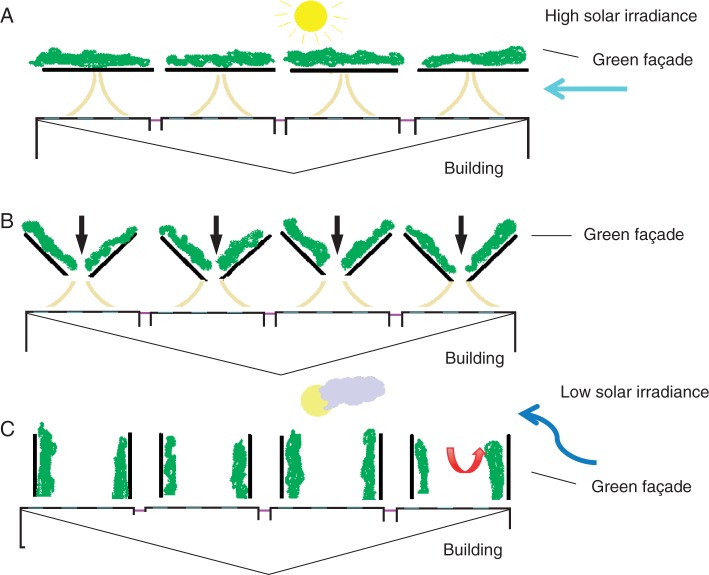Fig. 7.
‘Mobile’ green façade system used to alter temperature on the southern wall (northern hemisphere) of a single-storey building (diagram shows wall and façade from above). (A) During summer the façade is positioned to directly intercept solar irradiance and cool the building through shade and evapotranspiration. Prevailing summer breezes are funnelled between the building and the façade, thereby providing further cooling. (B) The green façade comprises plants grown in troughs, each section of façade being dividable in the middle and orientated around 90° (e.g. using castors and guiding ground rail); façades push in towards the building, like doors. The position of the façades can be altered, e.g. in autumn and spring, to change the amount of irradiance hitting the building wall. (C) During winter the façades enable solar irradiance to reach the building wall, thereby maximizing natural light entering the building and creating a warmer environment around the building wall. Now the façades act as baffles, deviating any cold wind away from the wall, trapping pockets of warm air and further elevating the temperature of the building envelope on the southern aspect.

